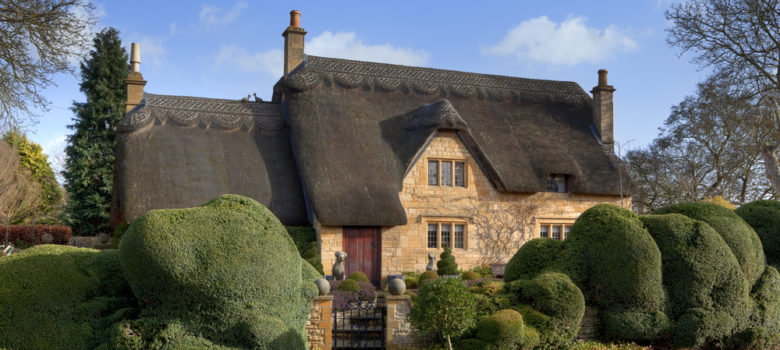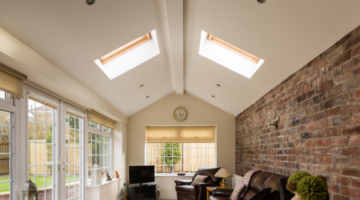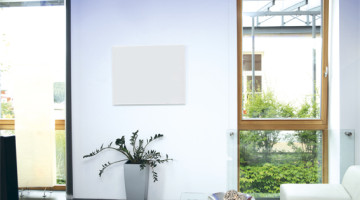
Listed buildings can be very difficult to heat properly. They are often draughty and poorly insulated, with archaic heating installed, on top of which you’re likely to be very limited as to any changes you can make to the building.
So what is the best way to heat this type of building? Let’s take a look at some of the various options.
Gas Central Heating
Assuming the building allows for a gas line and the associated plumbing to be installed, heating you listed building by gas is going to be the best option to heat the property. Gas is much cheaper per unit than electricity, and if the building is going to require a lot of heating to compensate for the lack of insulation, then a cheap per-unit option is important. It also allows you to heat your hot water by the same system, meaning that your hot water heating cheaper as well.
Of course, many listed buildings are off the gas grid, so this may not always be possible. It can also be very expensive to fit a central heating system from scratch in an older building, so if the budget is tight you may wish to look at other cheaper options.
Renewable Heating
Air source and ground source heat pumps are very popular at the moment, with the Renewable Heat Incentive (RHI) making them an affordable option in the long term. Unfortunately, with a property where insulation is poor, these sorts of systems are not usually an option. They work at too low a temperature to be able to heat such a draughty cold space. Only if the property has good insulation might you want to consider heating a listed building with a heat pump.
For listed properties out of town with an old central heating system, biomass could be a very good option. You will need a bit of space to store the fuel and the boiler can be quite bulky, but if you have a larger period property then this could be a great option. The advantages are numerous – biomass boilers are cheaper to run than any electric option; they can heat older, cold properties well because they operate at high temperatures just like a gas boiler; you can often take advantage of cheap or even free fuel from the local area, and you get the RHI payments for the installation. There are a few disadvantages – biomass systems will need regular maintenance and are more prone to breaking down than other heating systems. That said, we think that biomass boilers are the ideal way to heating listed buildings in rural settings.
Electric Options
If none of the above options are possible, then you may have to look at straight electric heating options. Electricity is more expensive than gas, but it may be the only way to go in an older off-grid property like this. There are some advantages to electric heating however – they are much less invasive than a central heating system, with no pipes or other clutter around the property. This means that, should your property require planning permission for this sort of work, electric options are much easier to get through building control than a central heating option
They are also relatively cheap to install – electric and storage options are going to set you back anywhere from £100-1,000 per heater. You can also combine electric heating with a solar PV system or wind power to help reduce the running cost.

Building Fabric
Whilst upgrading the heating system can be a good way to improve the efficiency, we always recommend a two-pronged approach. Wall insulation may not always be possible in these types of building, but loft insulation usually requires no permissions. You may also want to look at insulating wallpaper and similar products that can be fitted without contravening regulations.
Simply adding in thicker curtains and carpets can make a big difference. Ensure the windows have a good tight fit, and if you have sash windows, ensure they get refurbished every 10-15 years to ensure they have no draughts and are not loose in their frames. Secondary glazing like Ecoease is another cost-effective option for improving the thermal envelope of the property without running into problems with building regs.
Heating Period Properties
If you are thinking of making wholesale changes to your property, we really recommend getting some independent advice before you get started. It is really easy to make expensive mistakes, especially on more challenging projects like listed buildings or those in a conservation area. Please give us a call if you want to arrange a survey or just speak with us for more information.
Think we missed something? Do you have a different opinion?
Comment below to get your voice heard…












Sympathetic Secondary Glazing – For listed properties, the challenge can seem great but there are more solutions today than ever before. A project to insulate the heritage village of Clovelly, Devon found that loft insulation, pitched roof insulation, draught-proofing and secondary glazing reduced heat loss by up to 50% across a sample of 50 grade 2 listed cottages. The project used an award-winning “virtually invisible” secondary glazing system installed by period property specialists Mitchell & Dickinson. These measures are the low hanging fruit of insulation with a high return on investment. However it is also the case that deep retrofit solutions like internal wall and floor insulation are being approved for listed properties which can achieve near net zero CO2 emissions.
Thankyou,
I am just looking for general advice on how to cope with my heating problems